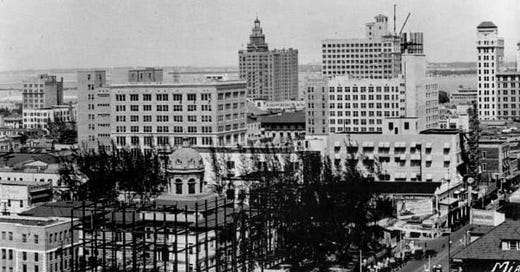Dade County Courthouses
The history of the different courthouse buildings in Miami through the years, with the current courthouse celebrating its grand opening on September 6, 1928.
The area that became the City of Miami was host to the county courthouse on several occasions before it became the permanent county seat in 1899. Around the time Florida achieved statehood in 1845, the area along the Miami River claimed as its courthouse the home of Dr. Robert Fletcher, a physician who held the office of Clerk of the Court and operated a store and trading post on the south bank of the Miami River.
Following the Civil War and during the Era of Reconstruction (1865-1877), William H. Gleason, a Carpetbagger and the political boss of Dade County, moved the dormant courthouse across the Miami River to the north bank near the mouth of the river into a long stone building built in the 1840s. This building served as a slave plantation house when it was built and later as an Army fort. In the 1920s, this building was moved to Lummus Park in downtown Miami and still stands today.
Keep reading with a 7-day free trial
Subscribe to Miami History to keep reading this post and get 7 days of free access to the full post archives.




